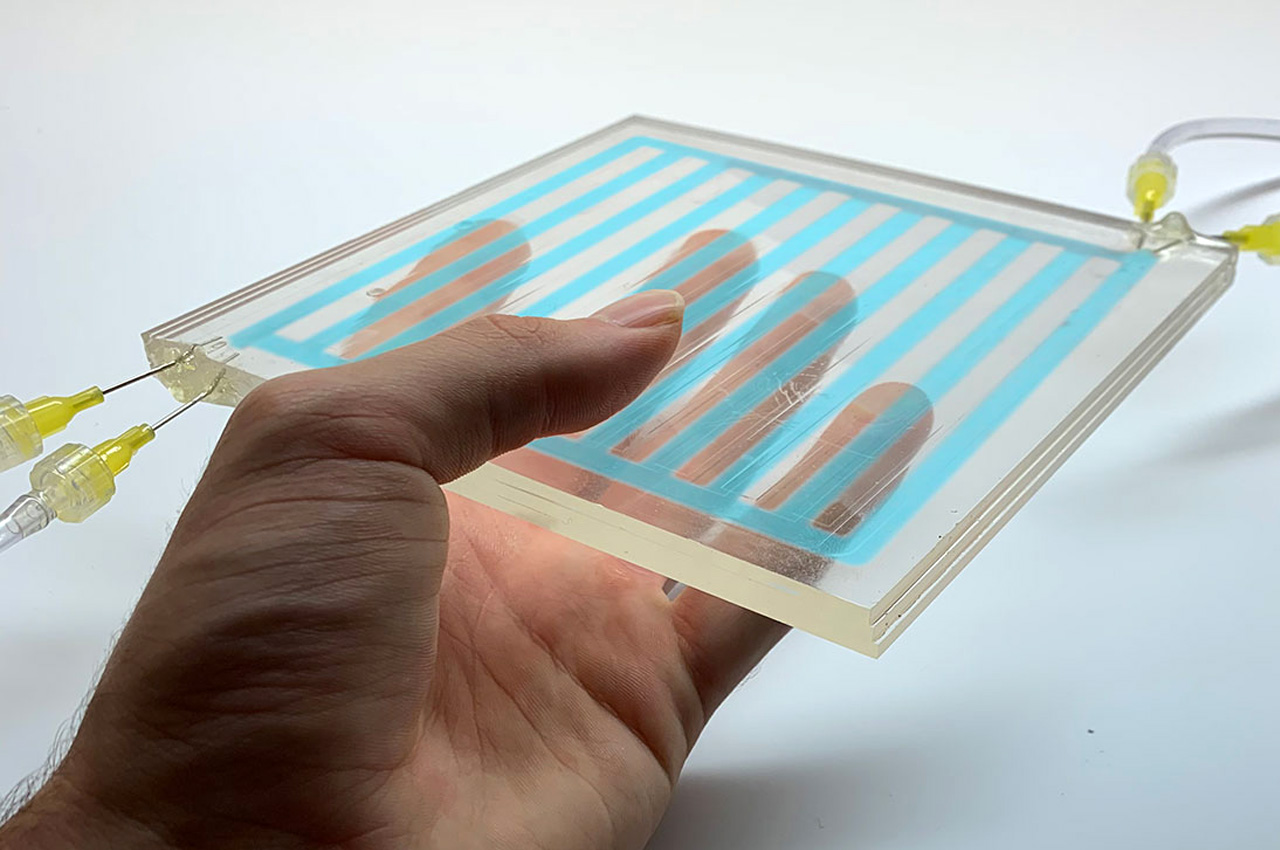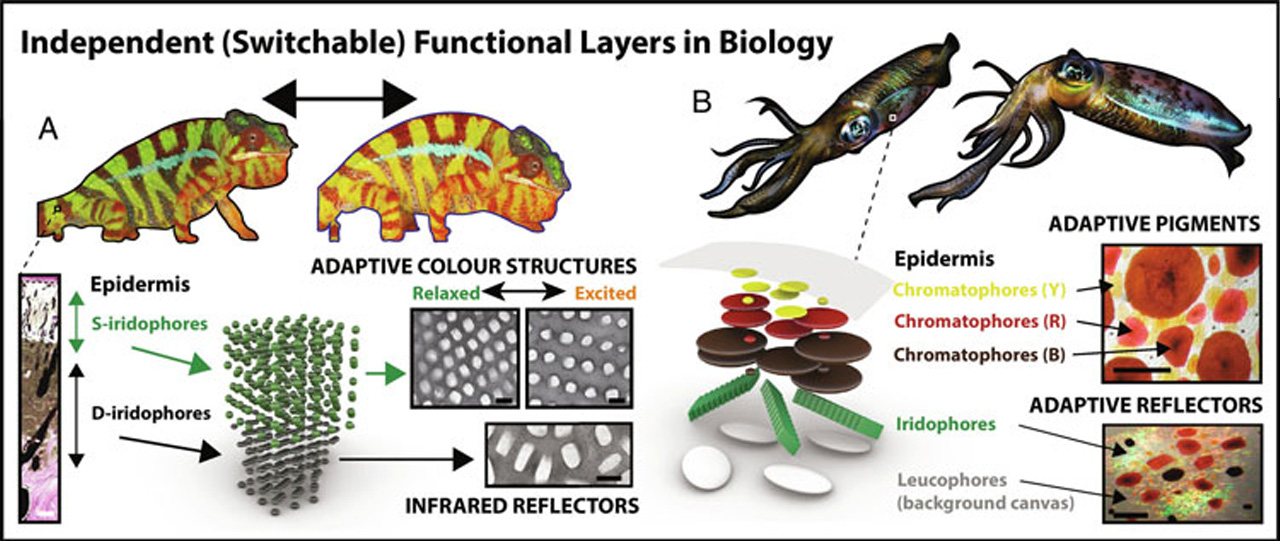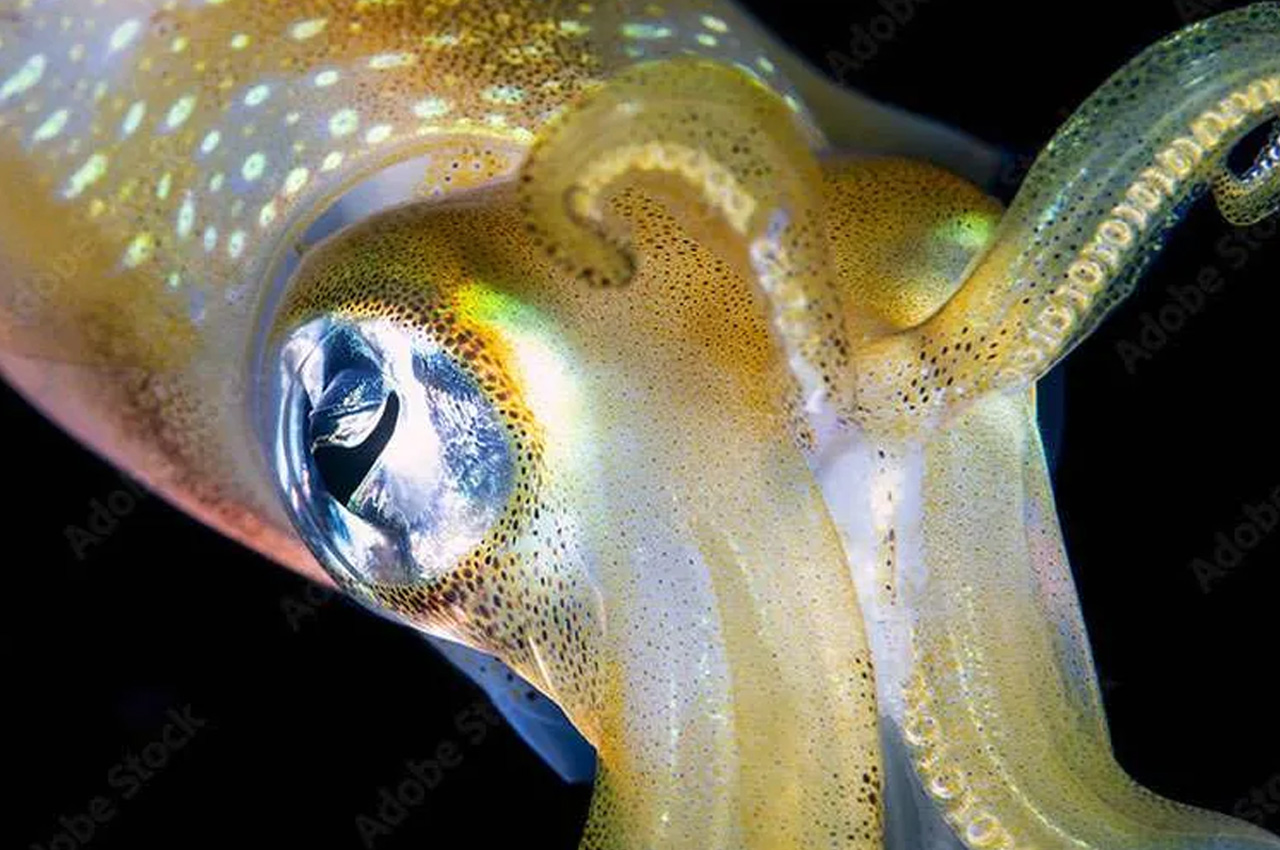
The University of Toronto researchers have been busy at work – busy drawing inspiration from the fluctuating and color-changing skin of squids and using it to create a multilayered fluidic system that can significantly bring down the energy costs associated with heating, lighting, and cooling buildings. More than a quarter of a building’s energy is lost via its glass-pane windows, and hence the university has developed liquid-filled panels, with the aim of retrofitting windows with them, and in turn, using these windows to supplement modern buildings.
Designer: University of Toronto

Squids move a certain type of pigment in their skin, which quite literally transforms the color and appearance of their skin. The University of Toronto utilizes a device that mimics this very movement and transports various liquids like dye solutions, glycerol, and carbon powder suspensions with the help of channels into thin plastic sheets. “It’s an advantage that this approach can use simple, relatively inexpensive, non-toxic, aqueous fluids,” said Benjamin Hatton, a professor of materials science and engineering at the University of Toronto.
By producing these liquid windows, the university hopes to make buildings more energy efficient, since currently, buildings consume about a third of the world’s energy. Smart building technologies such as automatic blinds and electro-chromatic blinds have been incorporated into modern buildings, but these systems have their limitations as well. They cant truly differentiate between the different wavelengths of light, nor can they control the distribution of light. The Univerisity of Toronto has instead created a rather dynamic and innovative system using simple and economical elements. Three thin sheets of Plexiglass have been joined together, each sheet holding 2-3mm of patterned channels in them. The researchers insert the different fluids through these sheets – water-based dye solutions or glycerol that absorb light of various colors, carbon pigment suspensions that control light transmission; and titania nanoparticle suspensions that are able direct the light that passes through.
“If we had just one layer that focuses on modulating the transmission of near-infrared light – so not even touching the visible part of the spectrum – we find that we could save about 25 percent annually on heating, cooling, and lighting energy over a static baseline. If we have two layers – infrared and visible – it’s more like 50 percent. These are very significant savings,” said Raphael Kay, who graduated with a master’s degree in mechanical engineering from the Faculty of Applied Science & Engineering. Currently, the panels they have developed are only 30×30 cm, but the team is hoping to build larger designs that can be used for larger constructions. They said that compared to the darkening windows available on the market today, these liquid windows can save 75% on heat energy, 20% on electricity for lighting, and 43% on total energy use annually.

The post Squid-inspired smart windows make buildings more energy-efficient first appeared on Yanko Design.
No comments:
Post a Comment